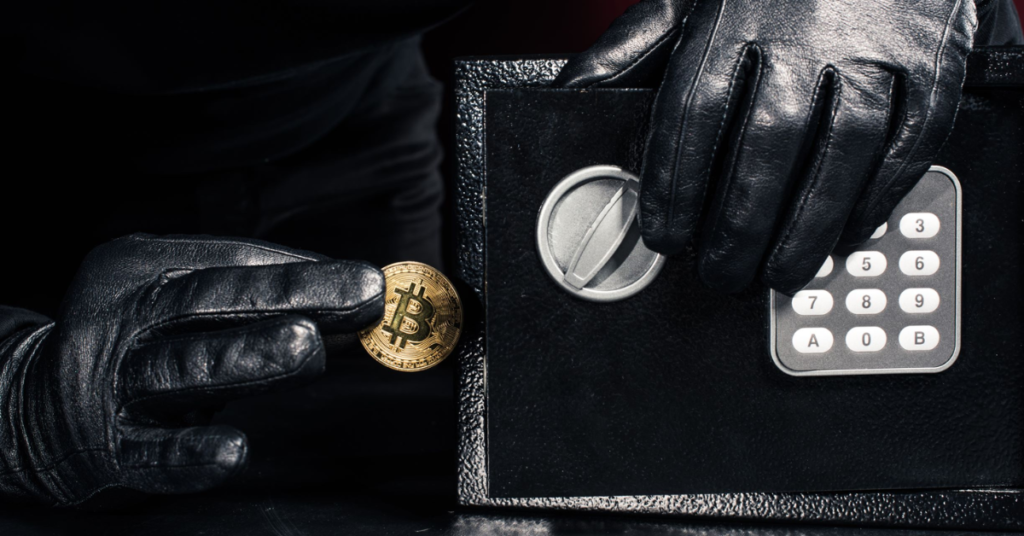As the popularity of digital currencies continues to grow, safeguarding cryptocurrency assets has become a priority for investors. With the prevalence of online threats, many are opting for offline storage—commonly known as “cold storage”—to keep their holdings secure. Unlike online wallets, which are vulnerable to hacking, offline storage provides a higher level of security by disconnecting assets from the internet. This guide will walk you through various methods of storing cryptocurrency offline, helping you choose the best option to protect your investments.

What Is Offline Storage?
Offline storage, also referred to as cold storage, involves keeping cryptocurrency assets in a device or medium that isn’t connected to the internet. By keeping funds offline, investors reduce the risk of cyberattacks, which are a common threat for online wallets. Cold storage solutions, such as hardware wallets, paper wallets, and air-gapped computers, help shield cryptocurrency from online threats while giving the owner full control over their assets.
Why Use Offline Storage for Cryptocurrency?
- Enhanced Security: Offline storage significantly reduces the risk of hacking by isolating your cryptocurrency from the internet. Cold storage is widely considered one of the most secure methods to protect your assets.
- Ownership of Private Keys: With cold storage, you retain control over your private keys, which are critical for accessing your funds. This eliminates reliance on third-party services for security.
- Long-Term Storage: Cold storage is ideal for investors who wish to store their cryptocurrency holdings for extended periods without regular access or transactions.
Methods for Offline Storage
Let’s explore the various offline storage methods and their features:
1. Hardware Wallets
Hardware wallets are physical devices specifically designed to store cryptocurrency securely. These devices connect to the internet only when needed to transfer funds, making them a top choice for offline storage.
- Top Brands: Popular brands include Ledger and Trezor, known for their reliable security features.
- Security: Hardware wallets are equipped with PINs, two-factor authentication, and recovery phrases for added protection.
- User-Friendliness: Hardware wallets are straightforward to set up and use. While they typically cost between $50 and $200, the added security can be worth it.
To avoid tampering, always purchase hardware wallets directly from the manufacturer or an authorized dealer.
2. Paper Wallets
A paper wallet is a physical document that contains a public address and a private key, often displayed as QR codes. This method is as simple as printing out the necessary information to access your cryptocurrency.
- Security Level: Paper wallets offer robust protection from online threats. However, they are susceptible to physical risks, such as fire, water, or loss.
- How to Create: Use reputable online tools to generate a paper wallet, but make sure to do this in a secure, offline environment. Once generated, print and store the paper wallet in a safe place.
- Storage Tips: Store your paper wallet in a safe, waterproof, and tamper-resistant container, like a safe deposit box.
While paper wallets are secure from cyber threats, they are fragile and require careful handling to avoid accidental loss or damage.
3. Air-Gapped Computers
An air-gapped computer is one that has never been connected to the internet and remains offline. This isolated device can be used to generate and store private keys securely.
- How It Works: With an air-gapped computer, you can create and store wallet files without any exposure to the internet. Many users repurpose old computers solely for this purpose.
- Security: Air-gapped computers provide one of the highest levels of security because they are completely inaccessible to hackers.
- Setup Complexity: While highly secure, setting up an air-gapped computer may be challenging for beginners. It’s best suited for tech-savvy users comfortable with handling digital security protocols.
Air-gapped computers are ideal for high-value, long-term holdings, offering maximum security with the downside of being somewhat more complex to set up.
4. Physical Backups: Metal Wallets
Metal wallets are a way to store your private keys or seed phrases on durable metal, making them resilient to physical damage.
- Durability: Metal wallets are fireproof, waterproof, and far more durable than paper wallets, making them ideal for long-term storage.
- Security Tips: Store metal wallets in a secure, concealed location. Treat them as you would a paper wallet, but with more resilience to physical threats.
- Popular Choices: Products like Billfodl and CryptoSteel allow users to engrave or punch in their private keys or seed phrases for safekeeping.
Metal wallets serve as a robust backup option and can complement other cold storage methods.
Best Practices for Offline Storage
To optimize the security of your offline storage, consider the following best practices:
- Keep Backup Copies: For paper or metal wallets, make a backup copy and store it in a separate secure location.
- Use Strong PINs and Passwords: With hardware wallets, select a strong and unique PIN or password to protect your device.
- Offline Key Generation: Generate private keys in an offline environment to prevent online exposure.
- Physical Security: Ensure that your storage devices or wallets are physically secure, protecting them from theft, fire, and water damage.
Potential Risks and Challenges of Offline Storage
Though offline storage offers high security, it also presents certain challenges:
- Physical Risks: Paper wallets are susceptible to degradation, hardware wallets can be lost, and metal wallets could be stolen. Take steps to minimize these risks.
- Accessibility: Cold storage isn’t suitable for frequent transactions, making it ideal for long-term holdings rather than daily trading.
- Technical Knowledge: Some offline storage methods, such as air-gapped computers, require a degree of technical expertise to set up and maintain securely.
Finding a balance between security and accessibility is essential. For regular access to funds, consider keeping a small amount in a secure online wallet while storing the majority offline.
Conclusion
The best offline storage method for your cryptocurrency depends on your needs, the value of your assets, and your technical proficiency. Hardware wallets are user-friendly and secure, making them an excellent choice for most users. Paper and metal wallets are low-cost, effective options that require careful handling, while air-gapped computers offer the highest security for those comfortable with more complex setups.
As a cryptocurrency investor, protecting your assets is a personal responsibility. By selecting the right offline storage method and adhering to best practices, you can ensure that your investments remain safe from online threats, providing peace of mind in the ever-evolving world of digital assets.




